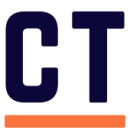Companies are doubling down on efforts to attract and retain top talent amid the continued mass exodus of the Great Resignation. As a result, their managers are left in a pinch: They must figure out a way to support their team members’ professional development goals in order to retain them while also supporting the company’s business goals.
Clear, consistent communication is a key ingredient in maintaining alignment between employees’ and business goals. According to a 2021 Gallup survey, only 7 percent of respondents strongly agree that their workplace communication is accurate, timely and open. Only 22 percent strongly agreed that their leaders have a clear direction for the organization.
Engineering managers are well aware that navigating and remedying misalignments is no easy feat. It can be tricky to find the sweet spot between achieving company goals and ensuring employees are satisfied and advancing their personal aspirations. This continual process is challenging at times, but by providing clear expectations and attainable benchmarks to team members and taking a genuine interest in their individual development, managers can build mutually beneficial relationships with their employees.
Built In Boston connected with engineering managers at six Boston-based firms to learn more about how they maintain alignment and foster a collaborative, harmonious workplace.

Somerville-based Formlabs develops and manufactures 3D printers and related software. Founded in 2011 by MIT Media Lab students, the company connects creatives across industries with powerful fabrication tools.
In your experience, what are the best ways to create and maintain alignment between an individual’s goals, hopes or expectations and the broader goals of Formlabs?
Keeping the goals of individuals lined up with company business objectives starts with understanding both of those sets of goals. Breaking down business milestones into individual tasks takes a lot of creativity in and of itself. It requires looking for efficient solutions and evaluating all possible paths to finishing a project. In a complex project, there are normally tasks that suit every level of individual development — from working on the details of a single component up to coordinating the interface between major systems.
Sometimes things just don’t line up. In those cases it’s really important to prioritize getting a contributor new challenges that can help them grow. It’s up to product and engineering leadership together to make sure the product roadmap is deep enough to keep ‘farming’ opportunities. One tool we have at our disposal is an advanced development rotation where an engineer can propose or select from a set of early R&D projects to work on for 6 weeks, even potentially with a cross-functional team. These projects aren’t just great for the person working on them — they also represent real business opportunities.
It’s up to product and engineering leadership together to make sure the product roadmap is deep enough to keep ‘farming’ opportunities.”
How can managers get more proactive about ensuring individual and company goals are aligned?
Communication is key. Individuals often don’t have a full picture of the kinds of opportunities that can be pulled out of the depths of a product backlog, so it’s important to spend some time with each individual exploring potential opportunities to find what is exciting to them. Since design engineering has so many facets, there are always times where the work that has to be done might not be the most exciting thing imaginable, so it’s important to predict when those stretches will happen — normally around the run-up to mass production — and manage expectations around when new opportunities will open up and what they’ll be like.
Digging deep on documentation normally isn’t as shiny as inventing a new mechanism, but to get that mechanism made at mass-production scale, every detail of the documentation has to shine. Empowering individuals with design ownership through the entire lifecycle of a part, subsystem or product is a great way to keep this balance in perspective.
Why is alignment important?
When a company’s goals don’t line up well enough with an individual’s goals, they’ll find new paths to grow. Sometimes these paths can be new roles within the same company, but frequently individuals will look for opportunities outside when the company does not support their goals well enough. Onboarding new engineers to complex optical, electrical, mechanical and materials systems can be a lengthy process, so there’s a lot of business incentive to keep these sets of goals aligned.
Business analysis aside, most engineering leaders I’ve worked with really care about seeing the people they mentor achieve their long-term goals. Our work is really about helping people develop into the technical contributor or leader that they want to become, so it’s always satisfying to see that work pay off.
STR’s mission is to provide technological solutions that address national security challenges. STR leverages machine learning and advanced software to meet the needs of a rapidly evolving world.
In your experience, what are the best ways to create and maintain alignment between an individual’s goals, hopes or expectations and the broader goals of STR?
Company leadership that communicates well at all levels is essential to keep employees and the business headed in the same direction. This includes encouraging employees to share their own visions for the group, division and company as well as leaders listening carefully to continually update their own plans.
Good communication also includes transparency, giving everyone visibility into and ownership of important decisions. At STR, this starts at the top with our CEO, Mark Luettgen, giving consistent monthly updates on a variety of company-wide metrics and giving insight into upcoming changes. In my five years at STR we have experienced rapid growth. Navigating changes that come with growth has been a lot easier thanks to a company culture of transparency.
Misalignment is ultimately a result of miscommunication or misunderstanding.”
How can managers get more proactive about ensuring individual and company goals are aligned?
Misalignment is ultimately a result of miscommunication or misunderstanding. Managers should commit to having routine one-on-ones with individual contributors at a mutually beneficial cadence. These provide a built-in opportunity to learn early and directly from individual employees if there are any friction points. Managers should be proactive about setting aside this time to ensure individuals have an opportunity to share their experiences and have their voices heard.
It is the joint responsibility of employees and their managers to understand the fundamental cause of any misalignment and to enact plans to resolve it, but it is ultimately the responsibility of managers to proactively ensure this dialogue happens. Some people may not even realize that a difference in purpose is holding them back, so it is important to encourage everyone to revisit their own priorities periodically.
Why is doing this important?
Employee morale and product quality will suffer when there is a misalignment in goals. At STR, we solve complex national security problems through innovation, which requires employee engagement and effective collaboration. I have been in situations in my career where I haven’t fully believed in the ultimate product the company is producing. It is still possible to enjoy the work and be productive if your day-to-day activities are genuinely challenging and rewarding, but eventually, the mismatch will rear its head. I am lucky to be at STR, where my goals and STR’s align: using expertise and teamwork to solve challenging problems that impact our national security.
Cybersecurity and network security company Rapid7’s Insight Platform provides organizations with tools to investigate and detect malicious threats, automate operations and more.
In your experience, what are the best ways to create and maintain alignment between an individual’s goals, hopes or expectations and the broader goals of Rapid7?
Trust and transparency are the most important aspects in understanding individual goals and maintaining alignment. As a manager I build trust by being vulnerable and open with my team, which allows them to feel comfortable doing the same as they share their goals. Understanding the motivations of each individual allows me to create opportunities for success and enable my team to grow.
Individuals must also play an active role in their career and their growth trajectory. One of our core values at Rapid7 is Never Done, which means we are always striving to grow, build and improve. We have resources for continuous learning, and provide the time to pursue training. As managers, we support individual goals by prioritizing learning and providing projects or opportunities for them to achieve their personal goals while simultaneously supporting the company goals.
When people are invested in their own growth and are able to articulate where they want to go, it helps us as managers support them.”
How can managers get more proactive about ensuring individual and company goals are aligned?
When people are invested in their own growth and are able to articulate where they want to go, it helps us as managers support them. Having open conversations about opportunities that support the organization and how it aligns with individuals goals can be a great time for feedback and a chance to see how things are going.
We also understand that individual goals aren’t static and direction may change over time. Continuous check-ins and feedback help us identify early when there may be misalignment. We remain flexible and open to change, because at the end of the day we want individuals to be in the right role to best support the company goals, and to help them grow and flourish.
Why is doing this important?
We strive to create alignment between our individual, team and company goals. At Rapid7, our mission is to help our customers be future ready, and we strive to put our customers first. For my team, product reliability is one of our customer outcomes and an individual goal might be learning a new programming language. If an individual writes a tool in a new-to-them language, increases product reliability and provides better outcomes for our customers, that’s a win-win for all! Without that alignment, individuals and teams can lose focus affecting our overall impact to our customers.
With a mission of transforming the small business financing industry, Boston-based fintech company Forward Financing offers same-day funding through its tech platform. The pandemic spurred enormous growth at Forward, and the company hasn’t slowed down since.
In your experience, what are the best ways to create and maintain alignment between an individual’s goals, hopes or expectations and the broader goals of Forward Financing?
What has worked for me is understanding the company vision, the roadmap and knowing what is expected from me and my team from leadership and my manager. Break down the company goals into smaller, individual goals. Collaborate with other teams and departments to do so.
Effectively and transparently communicate the company goals to your team. Know your team better, understand what motivates them, what their interests are, and what individual goals they want to achieve. You need to be genuinely interested in their success. Have open discussions, listen to what they have to say, encourage ideas and solutions, and come up with success metrics for the goals. Set up manageable and achievable goals for individuals that are in line with the objectives and goals of the company.
How can managers get more proactive about ensuring individual and company goals are aligned?
Once the individual goals are set, you should provide the individuals with ways in which they can achieve them. Provide tools and learning resources that can help them reach their goals. Use effective tools and software to manage and track progress at regular intervals or at one-on-ones and provide feedback. Reevaluate the success metrics if needed, if any parameters have changed at the company level. Motivate and reward them as they track toward their goals.
When the company and employee goals are in sync, achieving individual goals can provide them with a sense of purpose and pride.”
Why is doing this important?
When the company and employee goals are in sync, it helps build better and longer-term solutions for success. For individuals, achieving individual goals can lead to rewards, awards, and recognition, and provides them with a sense of purpose and pride as they see their contributions help propel the organization they work for. Similarly, the company can start seeing an increase in revenue, business growth, better company culture and morale, employee engagement and talent retention.
Founded in 2013, Boston-based software company Catalant Technologies developed its Expert Marketplace, which provides business leaders with access to over 70,000 independent experts and 1,000 consulting firms.
In your experience, what are the best ways to create and maintain alignment between an individual’s goals, hopes or expectations and the broader goals of Catalant?
It is important that each person understands the rationale behind company goals so that they can visualize how they will contribute towards them. It is not enough to present goals to the company in a slide show and post internally. There is real value in discussing them in small groups or individually to ensure there is clear understanding.
I have found that mapping individual goals to those of the company is an effective way to create alignment. Associating actionable items to these goals helps maintain that alignment over time as they are tangible and provide accountability.
I have also found it advantageous to check in on goals and alignment every few months to keep it fresh and make adjustments. It’s easy to lose sight in the daily grind. Asking questions like “How do you think the company is progressing on XYZ?... Why?...”, creates the opportunity to think about their contributions as part of the whole. It can help clarify and reinforce their role within the team and company. It is important to ensure that they recognize how their efforts are contributing towards company goals.
How can managers get more proactive about ensuring individual and company goals are aligned?
Consistency across management is needed to avoid confusion through different interpretations of the company goals. Before jumping into individual working sessions, collaborate with your peers to ensure there is a shared understanding. Avoid the assumption that everyone has the same understanding.
Take the individual into consideration. The need for alignment check-ins may vary in frequency depending on the individual as some may need more oversight or guidance than others. One blanket company goal review midway may not hit the mark.
Share the responsibility of alignment with everyone on your team. Encourage them to think about or ask “Why am I doing this?” and “How does this contribute to XYZ?” If it is not clear or does not seem to align, seek clarity before starting to avoid moving in the wrong direction.
When everyone is aligned toward a common goal, there is a high level of focus, collaboration and team synergy leading to personal job satisfaction.”
Why is doing this important?
When everyone is aligned toward a common goal, there is a high level of focus, collaboration and team synergy leading to personal job satisfaction, growth and engagement. Alignment can provide a sense of purpose and motivation. Maintaining this state provides the best trajectory for success at the company and individual level. As alignment erodes or varies, the risk of low success or failure increases over time. This could be costly for the company and negatively impact the individual.
Boston-based Stavvy helps mortgage professionals grow their business and ditch the paper process. The Stavvy digital mortgage platform makes it easy to work and collaborate with lending, title/settlement, notarial and loan servicing partners using features such as eSign, RON and eRecording.
In your experience, what are the best ways to create and maintain alignment between an individual’s goals, hopes or expectations and the broader goals of Stavvy?
Often these goals are already aligned, but it must begin at the hiring phase. Generally speaking, we look for individuals during the interview process who are strongly aligned with our values. One of those values is to be customer focused and obsessed with providing value to our end users. To that end, we often have company goals that revolve around customer acquisition and satisfaction to ensure we’re upholding this value. It then becomes somewhat simple to provide a recurring theme to inspire the work our engineers are doing, one that often marries the individual’s desire to provide value and Stavvy’s desire to satisfy its customers.
An example would be to set a quarterly goal to get certain features out the door in order to guarantee a successful onboarding experience for a particularly large customer, then communicating the purpose to the team. This ensures the employee understands the role they play in providing direct value to our customers. With this process, the goals are clear and the employees feel empowered and motivated to focus on these features, whereas otherwise they would have less motivation to stay focused on the task at hand.
How can managers get more proactive about ensuring individual and company goals are aligned?
While we aim to hire people with aligned values, it can still be easy to lose focus, particularly during phases of rapid growth. Startups often must pivot and make changes to goals. While these changes may be necessary, they can be complicated to explain and if they happen frequently, the explanations lose meaning. This is why it’s important for managers to use their one-on-one sessions as a way to test and prepare the team to better understand the reason behind the pivot. This also gives the engineers the opportunity to raise questions and concerns, leading to more transparent communication.
One simple question that can be asked to gauge the general level of understanding is: “Do you understand why we are building X?” or “Can you please explain to me what our current mission is?” Here the manager is looking for patterns and commonality among responses; if the answers are inconsistent or incorrect, the manager can quickly correct and then remind leadership to reinforce “the why” at the next all-hands meeting. Assuming that values are aligned, repeating and reinforcing simple explanations can avoid entrenchment of incorrect ideas. Frequent two-way communication is key for this to succeed.
Just like we iterate over software releases, managers and leadership must iterate over the goals until alignment occurs.”
Why is doing this important?
One of the primary challenges that plague engineering organizations of any size is to make sure that we are all marching towards the same goal together. An organization should continue to have healthy discourse, debate and validation of ideas, but ultimately the direction and purpose of all actions should align. Failure to achieve this alignment can result in individuals or entire groups spending cycles on fixing or building something that is not needed for the company. This can be catastrophic if done routinely at an early stage, costing the company critical time and money while also alienating the engineering teams.
Every individual, from a recent college graduate to a grizzled veteran, should be able to explain succinctly and clearly the purpose behind every project, bug fix and feature. Failure to do so can not only be costly, but can also result in individuals feeling disenfranchised and confused and ultimately losing interest as they fail to see the purpose behind their actions. Just like we iterate over software releases, managers and leadership must iterate over the goals until alignment occurs.

















